Improve the disease resistance rate of chickens
1.Liver and kidney health care
Human liver and kidney are very important, and the liver and kidney of the chicken are also important, because liver and kidney function is related to detoxification and metabolism. Therefore, paying attention to the liver and kidney health care of the chickens can make the chickens more energetic and the blood more smooth in poultry cage equipment.
2. Intestinal health care
The intestine is the largest immune organ of the chicken. The intestinal tract is not good. The health of the chicken is definitely not guaranteed. Even if it is not ill, it will become sick due to absorption problems. Gut care can even be said to be one of the most important things to raise chickens.
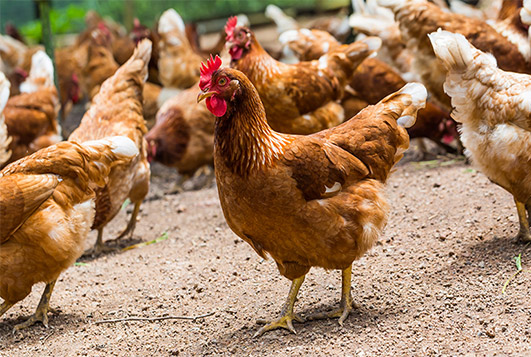
3. Different seasons of health care
This is actually easier for chicken farmers to understand, and generally not to make mistakes. Summer and winter, the health care for the chickens is definitely not the same. Winter protection, summer heat stress, drinking water, light, diet, ventilation, additives, etc. need to make correct adjustments. In spring, summer, autumn and winter, chickens are also susceptible to different diseases. Chicken farmers should have targeted preventive health care.
4. Health care should start from the chicken
The health care of the chicks must not be ignored, because the health of the chicken needs to lay a good foundation from the chicken stage. This good foundation is mainly manifested in the improvement of immune organs, the enhancement of immunity, the normal development of the intestines and organs. Chicken farmers usually use microecological preparations and some immune-enhancing drugs and nutrients to care for the chicks.
5. Mycotoxins are the source of all diseases of chicken
This statement is not necessarily accurate, but the effect of mycotoxins on the health of the flock cannot be overstated. Mycotoxins, even if they do not directly damage the health of the flock, cause immunosuppression, making the flock more susceptible to disease. Therefore, adding mold remover to the feed is something that chicken farmers must not ignore. After all, the mildew of corn pea meal may not be visible to the naked eye.
Reasonable selection of broiler breeding equipment
Broiler feeding equipment is a relatively popular breeding equipment in modern times. The emergence of such equipment has helped farmers solve many problems, while also protecting the environment and reducing environmental pollution. Everyone should also understand some of the advantages of fully automatic chicken equipment, but even the best equipment, if used improperly, there will be misunderstandings, then everyone knows the misunderstanding of automatic chicken farming equipment? Don't worry about it first, let's take a look at everything.
Two common mistakes in the use of broiler equipment:
1. Choose cheaper when purchasing broiler equipment: The cost of raising chicken equipment to raise chickens is much higher than that of the past. Therefore, many users tend to prefer cheap equipment when purchasing chicken equipment, and pay attention to the quality of equipment. Whether the requirements and standards are met, especially chicken cage equipment, chicken cages are the main equipment for raising chickens. Chicken cages with poor structure and poor quality will affect the growth and production of chickens, and the age is not guaranteed.
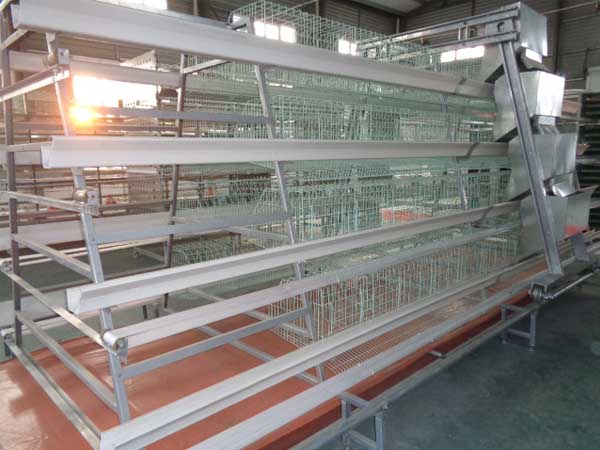
2. Do not pay attention to the maintenance of broiler equipment: Since the chicken farming equipment is generally large-scale mechanized equipment, the service life is relatively long, and the farmers need to carry out reasonable inspection and maintenance work on each broiler equipment on a regular basis, which can promptly find problems and The fault is solved, and the service life of the equipment can be ensured and extended, and the efficiency of the chicken raising work of the farmers is exerted. However, many farmers have neglected the work, resulting in short service life, high failure rate and increased cost.
Regarding the misunderstanding of broiler equipment, misunderstanding of equipment maintenance and the correct method of selecting broiler equipment, broiler equipment manufacturers can only analyze it here. I hope these contents can help you solve some problems.
What are the problems associated with poultry farming?
In recent years, with the rapid development of the chicken industry, many people have begun to use poultry farming equipment to raise chickens, and many new problems have begun to plague farmers. If farmers want to achieve better economic benefits in raising chickens, the following issues should be regulated.
Poor management
1. The disinfection system is not perfect. The vast majority of chicken farmers lack understanding of the concept of disinfection system, 90% of professional housing is very strict, but there is no disinfection pool at the door of the chicken house; 80% of professional households do not wear disinfection suits and shoes at all; 30% Professional households are closely related to their neighbours, and they are allowed to enter and exit the chicken house. The internal and external environment is poor. 50% disinfection method is single, only focusing on air disinfection, not paying attention to drinking water and feed disinfection, while most of the water used by village farmers is polluted on the surface. Well water.
2. Ignore elimination and overemphasize the survival rate. On the one hand, some farmers do not eliminate weak chickens and chickens in the reserve chickens. On the other hand, they ignore the elimination of old and low-yielding hens, and do not pay attention to calculating the ratio of input to output, thus affecting economic benefits.
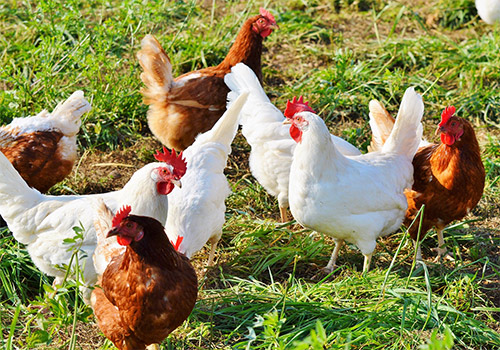
3. The faeces are piled up, and the sick and dead chickens are thrown. 80% of the professional households did not harmlessly treat sick and dead chickens. They were thrown upside down on the roads, behind houses, in idle areas, and encountered rainwater. The manure flowed through the ground, seriously polluting the surface water, and infected with the pathogens. Some farmers often slaughter chicken at the door of the chicken house, or throw the dead chicken to dogs and cats at random, without disinfection, which may easily cause outbreaks in the flock.
Disease prevention and control is not standardized
1. There is no corresponding measure for the epidemic prevention of diseases. Vaccines are not required during transportation, storage, and use, and the immunization program is arbitrarily changed.
2. Disease, healthy chicken polyculture. When individual chickens appear in the flock, they simply focus on treatment, neglect isolation and prevention, and create conditions for the spread and epidemic of the disease.
3. Despise disinfection. Individual chicken farms and chicken farmers cannot correctly understand the importance of disinfection, and only one-sided pursuit of reducing the cost of breeding, ignoring the disinfection work, leaving hidden dangers to the outbreak of the disease.
Keep chickens to prevent high temperature diseases
The temperature in summer is high. If the humidity in the chicken battery cages is large, the density of the flock is too large, and the ventilation is poor and the drinking water is insufficient, the chicken is prone to high temperature disease.
First, heat stroke
Young chicks are very sensitive to direct sunlight, especially young chicks that have just hatched for a few days, and are more prone to heat stroke during the hot summer months. The lack of drinking water equipment or drinking fountains is too small, the chicken house is small, surrounded by tall walls, around the chicken house or even the roof is closed by plastic film, which is the cause of heat stroke in young chicks and adult chickens.
Second, the production of thin shell eggs
When the temperature is as high as 32 ° C or above, the appetite decreases due to heat dissipation of the chicken. At the same time, the high temperature can make the chicken thyroid function disorder, the absorption of calcium is reduced, and it is easy to produce shellless eggs or thin shell eggs.

For the above reasons, the following points should be noted in prevention and control:
1. Ensure ventilation and supply plenty of water; reduce the stocking density in summer and try to let the chicken rest.
2. For heatstroke sick chickens, first transfer to a cool and ventilated place, place the chicken legs in a cold water basin, use a needle to pierce the cocks or the inner blood vessels of the wings, and administer 10 ml of normal
saline. If the flock is difficult to transfer, ventilation should be strengthened, cold water should be poured on the outer wall and top of the chicken house, and the chicken should be fed with broken watermelon skin.
3. Add 2% eggshell powder and supplement a sufficient amount of vitamin D on the basis of the normal daily food intake of the laying hens.
Broiler feeding management points of spring
1. Disinfection
The chicks are thoroughly cleaned and disinfected 5 days before entering the site, avoiding corrosive disinfectant such as caustic soda to prevent equipment damage, then fumigation with formaldehyde, and sealing the doors and windows. After 24 hours, the window is ventilated. Personnel must be strictly disinfected to avoid destroying the disinfection effect. The trough and drinking fountains are cleaned and disinfected. After the chicks arrive, the ground is cleaned every day to reduce the stimulation of the respiratory tract by dust and chicken fluff, and the chickens should be disinfected every other day. Several disinfectants can be used alternately, and the vaccination period should be avoided for more than 24 hours.
2. Temperature
There is a temperature difference between the three-layer chicken battery cages in the upper, middle and lower layers, and the lower the outdoor temperature, the greater the temperature difference. Brooding is generally at the highest level, because the highest temperature is the highest, which is conducive to saving heat. The chicks enter the field on the first day, the temperature is controlled at 33 ~ 34 ° C, but also according to the state of the chicks to adjust the temperature. When the temperature is suitable, the flocks are evenly distributed, active and active, and the appetite is strong; when the temperature is low, the neck is constricted and concentrated to the heat source. Squeeze each other, the body trembles; when the temperature is too high, the amount of drinking water increases, the appetite decreases, the breathing speeds up, and the neck feathers are soaked. In the first week, the temperature dropped to 30~C, and then decreased by 2°C every week. The density of three-dimensional culture was large, which was 1~2°C lower than the flattening temperature. It should avoid the heat stress and the food intake decreased.
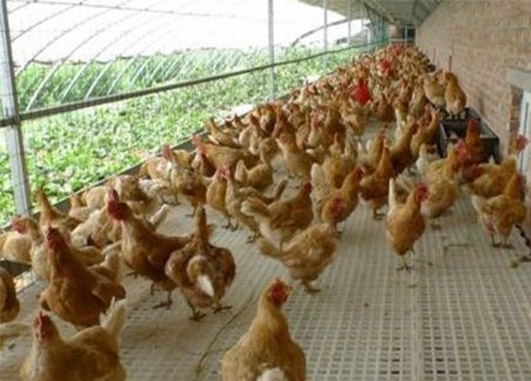
3. Grouping
Three-dimensional cultured broiler chickens use the whole sports chicks. When the chicks are too dense, they should be grouped in time to ensure that the chicks are evenly weighted. The first group is usually 12 to 16 days old, and the group is too early. Because the body size is too small, it is easy to grow in the cage gap. Drilling also wastes space and wastes energy. The second grouping, at 25 to 28 days of age, adopts the principle of “remaining weak and not staying strong” when grouping, and the important young chicks are placed in the lower layer, and the weak chicks are left behind. In summer, due to high temperature, it can be properly caged in advance. In winter, due to the large temperature difference between the upper and lower layers of the cage, the poultry battery cages time can be appropriately postponed, and one more in the lower cage to reduce the temperature difference between the upper and lower layers.
4. Ventilation
The key to successful aquaculture is ventilation, reasonable ventilation, elimination of harmful gases, temperature control, and reduction of ascites, chronic respiratory diseases and colibacillosis. The density of the three-dimensional farming unit is large, so ventilation is more important. Within 24 hours after entering the farm, the chicks can be ventilated due to the large space of the whole sports. As the age of the chicken increases, the ventilation volume is gradually increased, and the position and size of the air inlet are adjusted. Day, night, cloudy, sunny, spring, summer, autumn and winter. It is necessary to constantly adjust in a timely manner to achieve the feeling of no smell, no glare, no oxygen deficiency and more comfort in the house, to create a good growth space for the chickens, enhance the body's disease resistance and reduce the occurrence of diseases.
How to Feed Chickens with medicine
In the process of raising chickens in poultry cages for sale, chickens will inevitably become sick. Scientific medicine can avoid costs and improve breeding efficiency. How to feed chickens?
1, ,staged
Some diseases occur with specific time and conditions, and should be targeted according to the law.
2, timeliness
The opportunity to use drugs is crucial, and the disease should be used at an early stage. If the time is too long, it is often not effective.

3, accuracy
At present, there are many kinds of medicines, and there are many kinds of medicines for the same kind of diseases, but the effect will be different for a specific chicken group. Therefore, the drug susceptibility test should be done again, and the history of drug use and the experience of the breeder should be used.
4, choose a drug with high safety, so as to avoid the toxicity of some drugs, too strong side effects on the chicken body to produce a bad reaction.
5, the goal of medication is to reduce the growth of benefits, the choice of drugs should be based on economics as a basis for thinking. In the case of the same preventive effect, it is better to choose a drug that is cheaper and has no other disadvantages.
Feeding management techniques for baby chicks
Chicks generally refer to chickens that were born less than 50 days old. Chicks have young bodies, incomplete development of body functions, sensitive nervous system, high sensitivity to external changes, incomplete intestinal development, and poor resistance, but chicks have the characteristics of strong metabolism and rapid growth. Objective factors such as the environment in which the chicks live and the equipment of the feed have a great impact on the growth and development of the chicks. In the actual production environment, the breeder should adopt appropriate breeding management techniques for the characteristics of the chicks to provide a good environment for the healthy growth of the chicks.
1. Selection of chick breeding grounds
The growth and development of chicks is closely related to their living environment. Therefore, the selection of breeding sites is crucial. Whether the chicks can grow healthily and vigorously, the quality of the breeding ground plays a vital role. The breeding ground should be chosen in a sunny place to ensure that the chicks can get to the sun and disinfect the body of the chicks. On the other hand, breeding grounds should not be chosen where the wind is too strong, otherwise the chicks are prone to illness. The breeding ground should also have the requirements of quietness, comfort and sanitation. In addition, in the cage of the chicken, there should be an activity room to ensure that the chicks can move normally and have enough space for exercise.
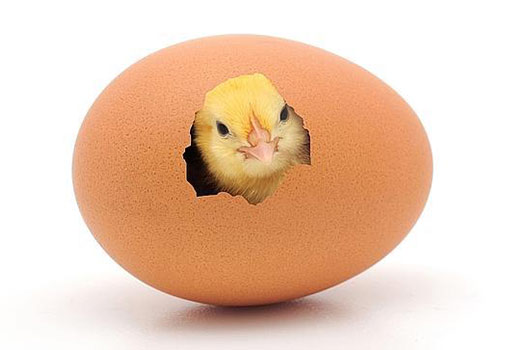
2. Feeding of chicks
Freshly shelled chicks have enough yolk for their nutrition in their own body. Therefore, it is not necessary to prematurely feed the chicks. Generally, the chicks are fed after 3 hours of full drinking. The correct choice of feeding time is of great significance for promoting the growth and development of chicks and improving the body's defense mechanism. Eating too late will increase the energy consumption of the chicks. If you start eating too early, it will increase the gastrointestinal burden of the chicks. In addition, in the feed preparation process of the chicks, the current use method should be adopted, and a little garlic juice can be added to the feed of the chicks to disinfect and sterilize.
There are many factors affecting the growth and development of chicks, such as genetics, nutrition, and environment. In the case of a small gap in the overall nutritional level of the farm, the farm environment has become the key to determining the success of the farm. Among the many environmental factors, the temperature, humidity, ventilation and lighting of the house are the most important, and it is the most difficult part of daily management. In order to save farming space and improve breeding efficiency, large-scale chicken farms usually adopt a caged approach. The level and location of the chicken battery cages are different, and the surrounding microenvironment (temperature, humidity, light, ventilation) will also vary.
1) Material: low carbon steel galvanized cold drawn steel wire, galvanized and delicate, corrosion resistant.
2) High-quality plastics can overcome the inflammation of the broiler's chest caused by the hard bottom of the cage.
3) Ample light, air circulation, and free drinking water.
4) It saves labor, materials, materials, management, observation, disinfection, decontamination, and easy operation.
5) Rugged, beautiful and easy to use, save space.
Prevent chicken from stress response
Chickens are also avoided stress reactions occur in Poultry Equipment for Sale. There are many reasons for the stress response of laying hens. Poor management in all aspects may cause stress. Stress seriously affects the healthy growth and laying of laying hens. Affect the economic benefits of the farmers, so in the process of breeding, farmers must pay more attention to avoid the stress response of the flock
There are many reasons for the stress response of laying hens. If the nutrients are not balanced in the feeds that are usually fed, the mildew of the feed will affect the feeding and absorption functions of the broilers and then physiologically appear to have a stress response. In addition, if the temperature of the house is too high or too low, or the ventilation is unscientific, the drinking water in the external environment such as noise will also cause stress. So how do you prevent a stress reaction?

1, Firstly, from the growth characteristics of laying hens, provide a good, quiet and comfortable growing environment for the laying hens, control of temperature and humidity, and management of ventilation should be scientific and reasonable, avoiding the humidity in the chicken house caused by poor ventilation. And air pollution, etc., to avoid the stress of environmental failure.
2, to ensure the stability of feeding throughout the breeding process, such as laying water, feeding, disinfection and other environments, must be in order, time is regular, farmers must pay attention to must not be cut off, lack of material.
3, In the breeding process, it is necessary to control the environment of the chicken house, such as fixing the time of the switch light, doing the cooling work in the summer, and keeping warm in the winter to prevent the adverse effects of high and low temperature on the laying hen. In the autumn when the temperature changes greatly, timely prevention and control measures should be taken. In the rainy season, work to prevent storms is also needed.
4, In the farm where the laying hens are raised, the farmers should be careful not to yell and scream, and pay attention to the chicken houses not to be built in noisy places.
5, The feed ingredients required for different growth stages of laying hens are different. Therefore, the farmers must change the feed at a certain stage. There must be a transitional stage in the process of changing the feed, so as to ensure the smooth adaptation of the broilers.
What are the current models of raising chickens?
What are the current models of raising chickens? Chicken raising is a very old farming project, and now many people choose to engage in the chicken industry. Compared with raising pigs and raising cattle, raising chickens is relatively small, but raising chickens is not so easy. Today, the author will come to talk to you about the things you need to pay attention to before breeding. I hope that everyone can help.
1. Place
At present, it can be said that chickens are cultured all over the country, and it can be seen that the adaptability of chickens is also quite strong. There are two main methods of raising chickens now, one is caged and the other is free-range. The cage method is mostly suitable for large-scale farming, and the automated poultry raising equipment is easier to manage. With the method of free-range, the requirements for the site will be relatively high. For example, you can choose to raise chickens in forests or grasses. In addition, there should be water in places where chickens are raised, so that chickens have one. A better place to be active.
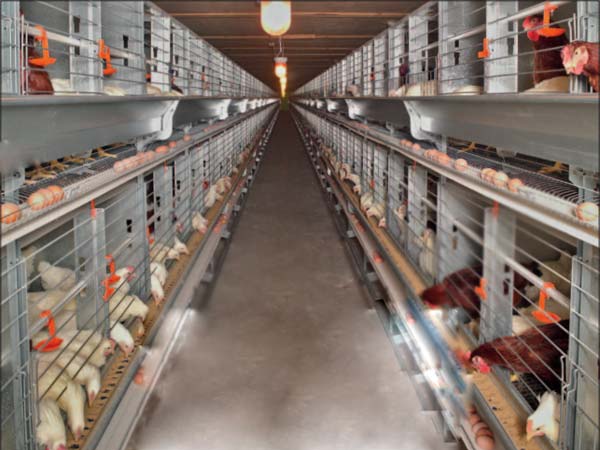
2. Preparation
After choosing a breeding ground, the next step is to build a chicken house. If it is caged chicken, the size of the chicken house is relatively large. Of course, the free-range is also to build the chicken coop, so that when the weather is bad or the chickens need to rest, they can provide a rest place for the chickens, while also paying attention to the safety next to them to prevent the emergence of natural enemies.
After you have prepared these, the next step is to buy the chicks, buy the good chickens in a regular place, and pick the chickens that are in good spirits, lively and disease-free.
3. Management
Before breeding chickens, the farmers must master the chicken farming techniques and daily management measures, especially sanitary cleaning, disinfection, feed matching, vaccines and so on. Once the management is not good, it is easy to cause problems, and in severe cases, the chickens will become sick and die.
Standardized chicken house ventilation problems
Ventilation is very important in standardized chicken farms. At present, standardized chicken houses are mostly closed farming, use fully automated poultry farming equipment. In order to keep the air in the chicken house fresh, there is enough oxygen to discharge harmful gases, moisture and dust, keep the environment inside the house clean, and set the ventilation system. It is the most important, correct use and control is also the most critical, can not be ignored. Here is a brief introduction to the relevant technical aspects of ventilation control in actual work:
1. Slow wind speed and poor cooling effect
(1) The wind channel has obstructions to block the wind;
(2) The size of the opening of the tuyere is different or the wind is too large;
(3) The vents, fan blades, and louvers are not clean, the louvers are not open, and the angle is small, which affects the wind speed;
(4) The rust of the fan is not working well, and the belt is too loose to reach the required power;
(5) The chicken house is too long, the fan setting is too small, too small, and the wind is insufficient;
(6) When the longitudinal ventilation is opened, the side air outlet may have air leakage, which may affect the wind speed without lowering the temperature;
(7) The wind inlet wind speed is lower than the required wind speed and no negative pressure can be formed. Should be kept above 4m / s.
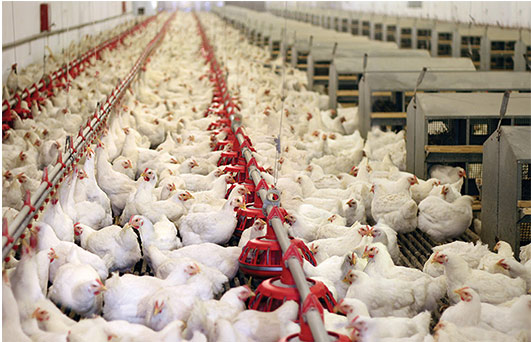
2. The chicken house is stuffy
(1) There are many air blowers, the air inlet is small, the air intake is less, the air inlet ratio is less than 2:1, the negative pressure is high, the oxygen is lacking, the chicken house is sultry and the wind speed is fast, and the chicken is easy to get cold.
(2) In particular, the front end of the air intake is less likely to form a windless area.
(3) Pay attention to the area of the tuyere and the area of the fan. Guaranteed air outlet area: fan area = 3:1. Front end air outlet.
3. The temperature difference between the upper and lower houses is large
(1) The outside of the house is cold and cool, the wind is large, the wind is falling rapidly, and the chicken house is too long, the number of fans is small, and the wind is insufficient.
(2) It can reduce the surface of the tuyere to prevent the wind from sinking, especially reduce the area of the end tuyere, so that the wind speed is accelerated and discharged as soon as possible.
(3) The length of the house is controlled within 120m. It is also possible to add a booster fan to the middle.
